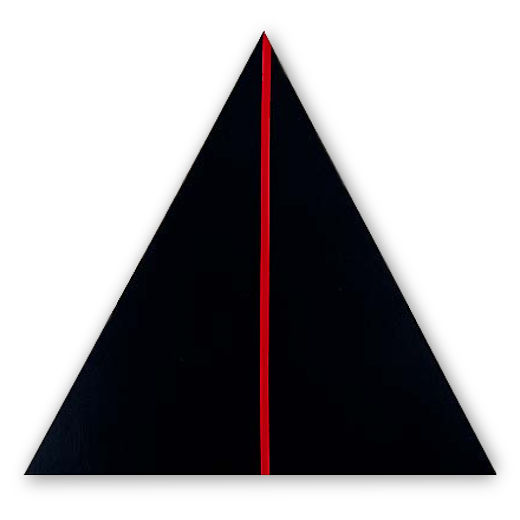 By
the mid-1960s the "cool" look of the Minimalist and Pop
art of the sixties had opened the public's eyes to Newman's spare
yet powerful paintings. Amid this fresh appreciation, Newman continued
to evolve as an artist. This is the period in which he adopted the
word "zip" to describe the vertical bands in his canvases.
He downplayed the contemplative element of his art, and gave his paintings
hard edges and smooth surfaces that deemphasize the artist's touch.
Working with paint straight out of the tube, Newman created bold paintings
in primary colors, using the newly popular medium of acrylic paint
to full advantage as he strove for even, saturated coats of color.
This approach is exemplified by the magnitude and intensity of red
in the largest painting of his life, Anna's Light (named for the artist's
mother). Newman also experimented with new shapes, painting Chartres
and Jericho on triangular canvases that were inspired by the preparation
of the pyramidal base for his sculpture Broken Obelisk. By
the mid-1960s the "cool" look of the Minimalist and Pop
art of the sixties had opened the public's eyes to Newman's spare
yet powerful paintings. Amid this fresh appreciation, Newman continued
to evolve as an artist. This is the period in which he adopted the
word "zip" to describe the vertical bands in his canvases.
He downplayed the contemplative element of his art, and gave his paintings
hard edges and smooth surfaces that deemphasize the artist's touch.
Working with paint straight out of the tube, Newman created bold paintings
in primary colors, using the newly popular medium of acrylic paint
to full advantage as he strove for even, saturated coats of color.
This approach is exemplified by the magnitude and intensity of red
in the largest painting of his life, Anna's Light (named for the artist's
mother). Newman also experimented with new shapes, painting Chartres
and Jericho on triangular canvases that were inspired by the preparation
of the pyramidal base for his sculpture Broken Obelisk. |

